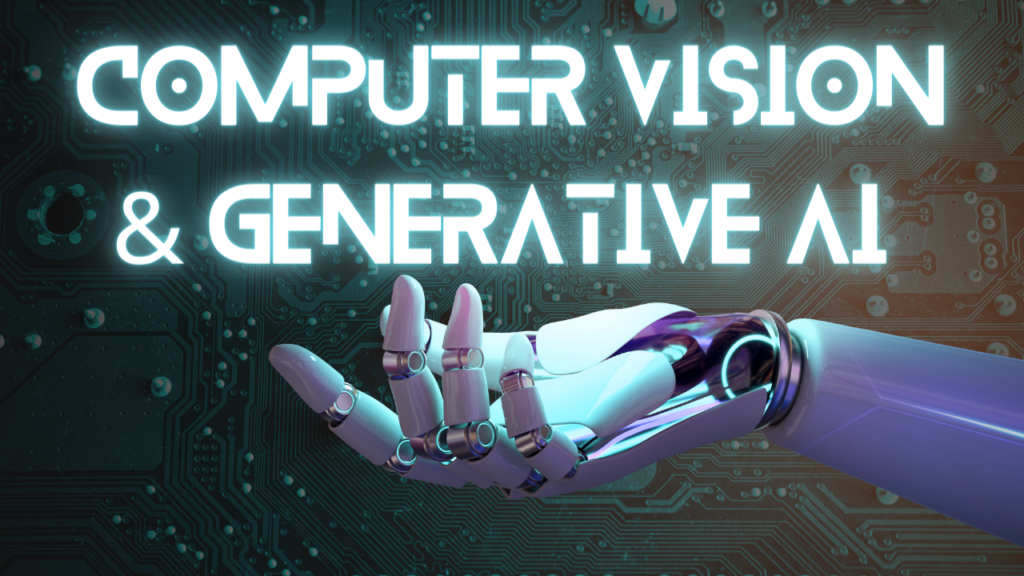A Comprehensive Guide to Understanding Computer Vision Technology

In the era of rapid technological advancement, computer vision stands as a pivotal innovation that is reshaping how we perceive and interact with the world around us. Computer vision technology harnesses the power of artificial intelligence and image processing to enable machines to interpret and comprehend visual information, akin to human sight. By mimicking human visual perception, computer vision systems can analyze and make sense of images and videos, identifying objects, patterns, and even emotions with remarkable accuracy.
This guide delves into the intricate realm of computer vision, unraveling its underlying mechanisms and shedding light on its myriad applications. From self-driving cars that navigate complex roadways to medical diagnostics that identify anomalies in medical images, the reach of computer vision is vast and transformative. Understanding the core concepts, such as image recognition, object detection, and image generation, forms the cornerstone of delving deeper into this technology.
As industries worldwide integrate computer vision into their operations, staying informed about its potential and limitations becomes increasingly crucial. Whether you’re a technology enthusiast, a business owner exploring innovative solutions, or a researcher pushing the boundaries of AI, this comprehensive guide is your compass through the exciting landscape of computer vision technology. Join us as we explore its history, its current capabilities, and the boundless possibilities it offers for the future.
Applications of Generative AI in Computer Vision: Exploring Creative Possibilities
In the realm of computer vision, the convergence with generative artificial intelligence (AI) has ignited a creative revolution, opening doors to a world of imaginative possibilities. Generative AI, driven by sophisticated algorithms like Generative Adversarial Networks (GANs), empowers machines to not only comprehend images but also to generate entirely new visual content.
One captivating application of generative AI in computer vision is the realm of artistic creation. Artists and designers now collaborate with AI to produce mesmerizing artworks, merging human creativity with algorithmic ingenuity. GANs can synthesize new images that blend styles, transform mundane scenes into abstract wonders, and even revive classic art forms with a modern twist.
Another transformative application lies in data augmentation. Generative AI can create synthetic data that mirrors real-world variations, enhancing the robustness of computer vision models. This is particularly valuable when training models for scenarios with limited data availability, ensuring accurate performance in diverse conditions.
In the field of fashion, generative AI assists designers in conceptualizing and prototyping clothing and accessories. By generating a spectrum of designs based on input criteria, designers can efficiently explore novel ideas and push the boundaries of conventional aesthetics.
Generative AI also contributes to architectural innovation. Architects can visualize design alternatives through AI-generated 3D models, fostering a streamlined creative process and enabling informed decisions.
As we journey through this paradigm shift, the potential for generative AI in computer vision is only just being realized. From entertainment and advertising to healthcare and education, its applications are reshaping industries and fueling human ingenuity. Join us as we explore the creative tapestry woven by the fusion of generative AI and computer vision, where innovation knows no bounds.
Machine Learning Advancements: How Computer Vision and Generative AI Converge
In the ever-evolving landscape of technology, the convergence of machine learning, computer vision, and generative artificial intelligence (AI) is emerging as a powerhouse of innovation. This convergence marks a significant step forward in the capabilities of machines to not only understand visual information but also to create, enhance, and transform it.
Computer vision, the field that empowers machines to interpret images and videos, is now enhanced by the prowess of generative AI. This synergy allows machines to not only recognize patterns and objects but also to generate content that is remarkably realistic and contextually relevant. One of the pioneering technologies driving this convergence is Generative Adversarial Networks (GANs), where two neural networks collaborate to generate astonishingly authentic visuals, often indistinguishable from reality.
The applications of this convergence are far-reaching. In medical imaging, machine learning-powered computer vision aids in the accurate diagnosis of diseases by analyzing intricate details within medical images. By integrating generative AI, we can envision a future where medical imaging not only enhances diagnosis but also creates personalized treatment visualizations, helping patients better comprehend complex medical procedures.
In the creative realm, this convergence fuels artistic expression. Artists and designers leverage machine learning algorithms to bring their visions to life, transcending conventional boundaries. With generative AI, these creators can explore uncharted territories, generating novel compositions and designs that captivate the imagination.
From autonomous vehicles navigating complex environments to smart cities optimizing resources, the fusion of machine learning, computer vision, and generative AI is propelling us into a new era of possibilities. As we delve into the heart of this convergence, we uncover the unfolding story of machines that learn, perceive, and envision—a future limited only by the bounds of human innovation.
Enhancing Visual Recognition with Computer Vision and Generative AI
In the digital age, the capacity for machines to understand and interpret visual information has taken a monumental leap forward with the fusion of computer vision and generative artificial intelligence (AI). This dynamic synergy not only enhances visual recognition but also redefines the way we perceive and interact with the world around us.
Computer vision, the technological marvel that grants machines the ability to process images and videos, has reached new heights with the incorporation of generative AI techniques. By leveraging advanced algorithms like Generative Adversarial Networks (GANs), machines are now capable of generating images that are astonishingly lifelike and contextually relevant. This augmentation isn’t just limited to mimicking reality; it extends to creative expression, enabling machines to generate art, design, and aesthetics that captivate and inspire.
In fields such as e-commerce, where visual appeal significantly influences consumer choices, this fusion is proving transformative. Product recommendations become more precise as machines grasp subtle visual cues, leading to tailored suggestions that resonate with individual tastes. Moreover, virtual try-ons powered by generative AI allow customers to visualize how clothing, accessories, or even furniture might look on them, enhancing the online shopping experience.
The convergence of computer vision and generative AI is also reshaping healthcare. Medical imaging, a cornerstone of diagnostics, becomes more accurate and insightful as machines analyze intricate details, aiding doctors in making informed decisions. This collaboration holds the potential to revolutionize medical training, offering students lifelike simulations that emulate real-world scenarios.
As we navigate this landscape of innovation, the enhancement of visual recognition is just the beginning. The marriage of computer vision and generative AI invites us to a future where machines and humans communicate through images, creating a seamless synergy that transcends conventional boundaries. Join us on this transformative journey, where vision becomes insight and creativity knows no limits.
The Role of Deep Learning in Powering Computer Vision and Generative AI
In the realm of artificial intelligence, the emergence of deep learning has ushered in a new era of capabilities, particularly evident in the fields of computer vision and generative AI. Deep learning, a subset of machine learning, hinges on neural networks with intricate layers that enable machines to autonomously learn and extract features from vast datasets. This paradigm shift has not only supercharged the accuracy of visual recognition but has also unlocked the door to generative AI, where machines create content that rivals human creativity.
Computer vision, driven by deep learning algorithms, has elevated the accuracy and complexity of visual interpretation. Convolutional Neural Networks (CNNs) have become pivotal in identifying objects, shapes, and patterns within images and videos. These networks are capable of automatic feature extraction, mimicking the hierarchical structure of human visual processing.
Generative AI, a domain empowered by deep learning, introduces transformative capabilities through architectures like Generative Adversarial Networks (GANs). GANs consist of two neural networks, a generator and a discriminator, engaged in a creative tug-of-war that results in the generation of remarkably realistic images, audio, and even text.
The influence of deep learning doesn’t stop at creating and recognizing. It extends to tasks like image segmentation, where objects within images are delineated, and style transfer, where artworks adopt the aesthetic of famous painters. This technology permeates industries like entertainment, where visual effects redefine cinematic experiences, and fashion, where AI assists in design ideation.
As we delve deeper into the nexus of deep learning, computer vision, and generative AI, the boundaries of what machines can achieve continue to expand. This synergy holds the promise of revolutionizing industries, unlocking novel artistic expression, and advancing human-machine interaction. Join us in exploring the intricate web of innovation spun by the profound role of deep learning in shaping the future of AI.
Revolutionizing Industries: Real-World Use Cases of Computer Vision and Generative AI
In the fast-evolving landscape of technology, the dynamic duo of computer vision and generative artificial intelligence (AI) is orchestrating a revolution across industries. Let’s delve into real-world use cases where this convergence is driving transformative change:
Healthcare Revolution: Computer vision assists doctors in diagnosing diseases from medical images with unparalleled accuracy. Generative AI aids in generating synthetic medical imagery to enhance training data, leading to early disease detection and personalized treatment plans.
Manufacturing Mastery: Quality control becomes flawless with computer vision systems that inspect products for defects. Generative AI contributes by creating optimized designs and predicting maintenance schedules, streamlining manufacturing processes.
Autonomous Advancements: Self-driving cars powered by computer vision navigate roads safely. Generative AI creates virtual driving scenarios, enhancing the training of autonomous systems for various road conditions.
E-Commerce Evolution: Computer vision enables visual search and product recommendations for online shoppers. Generative AI enhances the customer experience by enabling virtual try-ons and personalized design solutions.
Entertainment Transformation: Generative AI crafts lifelike animations and special effects, revolutionizing content creation in movies and gaming.
Artistic Expression: Artists collaborate with generative AI to produce captivating artworks that blend human creativity with AI innovation.
Smart Urban Planning: Computer vision analyzes urban dynamics, aiding in traffic management and infrastructure planning. Generative AI assists in creating simulated urban development scenarios for informed decision-making.
Agricultural Innovation: Computer vision monitors crop health and growth, optimizing agricultural practices. Generative AI predicts crop yield and supports precision farming.
Security Enhancement: Computer vision detects anomalies and threats in real-time, bolstering security and surveillance efforts. Generative AI generates lifelike training scenarios for security personnel.
Retail Reinvention: Computer vision enables cashier-less checkout and inventory management in retail. Generative AI designs eye-catching store layouts and packaging.
Conclusion
In conclusion, the intertwining journey of computer vision and generative AI has ignited a technological renaissance that’s reshaping industries, pushing creative boundaries, and redefining human-machine interaction. The union of these two powerful domains has led to an era where machines not only perceive and understand visual information but also create content that resonates with human creativity.
Computer vision’s prowess in analyzing images and videos has transformed sectors like healthcare, manufacturing, and security. It has become the bedrock of medical diagnostics, quality assurance in manufacturing, and real-time surveillance. Generative AI, with its remarkable ability to generate realistic content, has unlocked artistic expression, personalized design, and predictive modeling across various fields.

